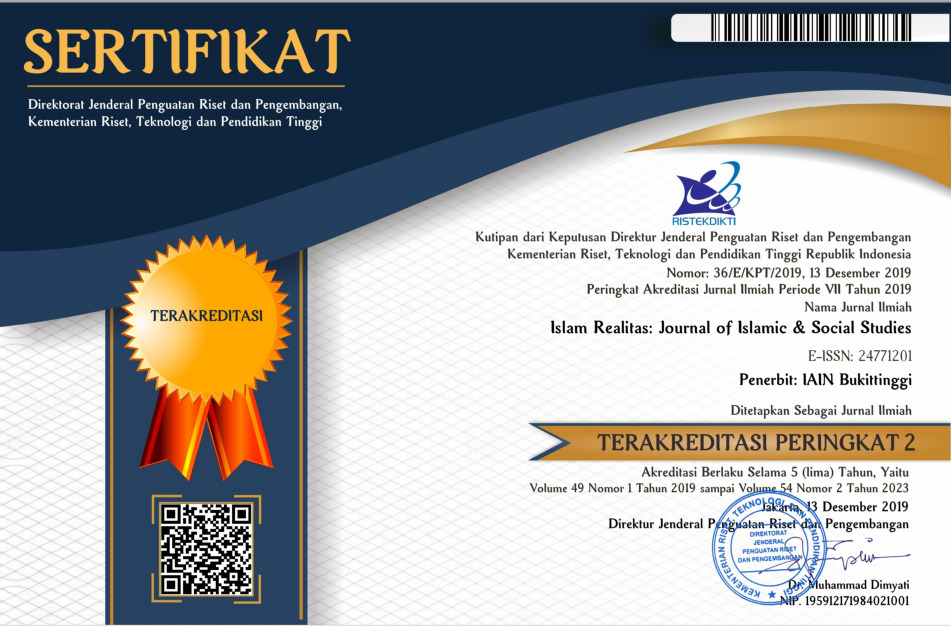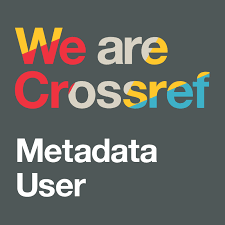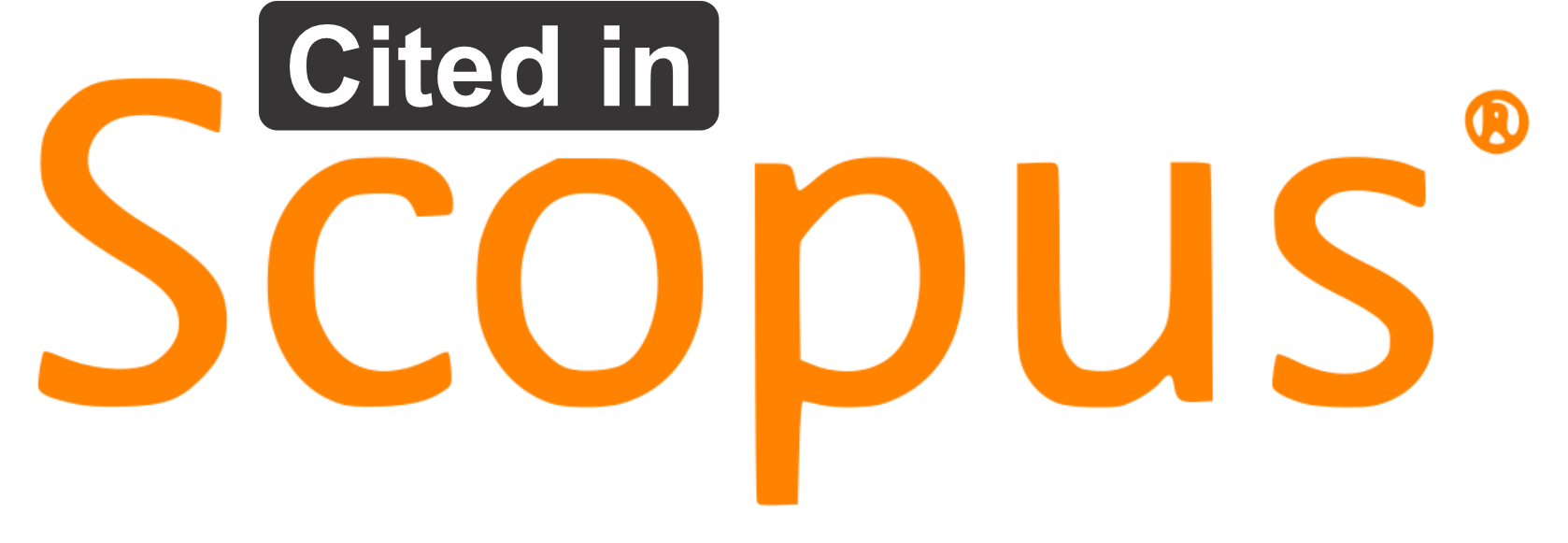Enhancing Waqf Forest Sustainability Through Agroforestry: Case Study from Bogor Waqf Forest, Bogor, Indonesia
Downloads
The high rate of forest conversion in Indonesia required further actions to overcome. One of the solutions is through waqf (endowment) forest, a forest developed on waqf land. According to Islamic law, a waqf forest cannot be sold, granted, inherited, or changed unreasonably. Previous researches generally focused more on the potential and prospect of cash waqf or land waqf for forest protection. On the other hand, a study to enhancing waqf forest sustainability still needs to be developed, especially in Indonesia. This paper aims to observe the practice of agroforestry to enhance the sustainability of waqf forest, with the case study location in the Bogor Waqf Forest, Cibunian Village, Pamijahan District, Bogor Regency, Indonesia. The present study was conducted from March 2019 until June 2021, using a literature study, observation, and in-depth interview method then analyzed descriptively. Agroforestry practices are chosen in the case study location, such as agrosilvicultural, agrosilvopastoral, and agrosilvofishery. Based on the Sustainable Forest Management (SFM) goals, agroforestry practices in waqf forests are estimated to extend forest resources, increase biodiversity, forest health, forest production, and protection functions, and contribute to social and economic development benefits.
Â
Tingginya alihfungsi lahan hutan di Indonesia memerlukan usaha lebih untuk mengatasinya. Salah satu solusinya adalah melalui program hutan wakaf, yaitu hutan yang dibangun di atas tanah wakaf. Berdasarkan hukum Islam, hutan wakaf tidak boleh dijual, diberikan, diwariskan, dan diubah fungsi lahannya tanpa alasan yang dibenarkan. Penelitian-penelitian sebelumnya lebih berfokus pada potensi dan prospek dari wakaf uang atau wakaf tanah untuk melindungi hutan. Studi mengenai upaya pelestarian hutan wakaf masih perlu untuk dilakukan, terutama di Indonesia. Studi ini dilakukan pada bulan Maret tahun 2019 hingga Juni tahun 2021, berlokasi di Hutan Wakaf Bogor, Desa Cibunian, Pamijahan, Kabupaten Bogor, Indonesia, menggunakan metode studi literatur, observasi lapang, dan wawancara pakar yang kemudian dianalisis secara deskriptif. Beberapa praktik agroforestri dipilih untuk diaplikasikan pada lokasi studi, seperti agrosilvikultura, agrosilvopastoral, dan agrosilvofishery. Berdasarkan tujuan pengelolaan hutan lestari (SFM), praktik agroforestri pada hutan wakaf diestimasikan tidak hanya meningkatkan sumber daya hutan, biodiversitas, kesehatan, produksi, dan perlindungan hutan, tetapi juga memiliki manfaat sosial dan ekonomi.
Book
Foresta, H De, A Kusworo, G Michon, and WA Djatmiko, Ketika Kebun Berupa Hutan, Agroforest Khas Indoesia: Sebuah Sumbangan Masyarakat, ICRAF (International Centre for Research in Agroforestry) (Bogor, indonesia: SMT Grafika Desa Putera, 2000) <https://doi.org/10.1017/CBO9781107415324.004>
Jamnadass, R., F. Place, E. Torquebiau, E. Malézieux, M. Iiyama, G. W. Sileshi, and others, Agroforestry, Food and Nutritional Security, Unasylva, 2013, LXIV
MCKay, JE (Editor), Integrating Religion Within Conservation: Islamic Beliefs and Sumatran Forest Management (Kent, United Kingdom: Durrell Institute of Conservation and Ecology, 2013)
Ministry of Environment and Forestry, The State of Indonesia’s Forests 2018 (Jakarta: Ministry of Environment and Forestry, Republic of Indonesia, 2018)
Saheeh International Translation, The Qur’an with Surah Introductions and Appendices, ed. by A. B. Al-Mehri (Birmingham: Maktabah Booksellers and Publishers, 2010) <http://quran.com/1>
Santoso, Harry, Forest Area Rationalization in Indonesia: A Study on The Forest Resource Condition and Policy Reform (Bogor: World Agroforestry Centre (ICRAF), 2003)
Thayyarah, Nadiah, Buku Pintar Sains Dalam Al-Qur’an (Mausu’ah Al-I’jaz Al-Qur’ani), ed. by Chairul Ahmad, Dar Al- Yamama, Abu Dhabi (Jakarta Selatan: Penerbit Zaman, 2014)
Toensmeier, Eric, The Carbon Farming Solution (White River Junction, Vermont: Chelsea Green Publishing, 2016)
Journal
Abad-ur-Rahman, and Muhammad Ayaz, ‘Sustainable Conservation of Forests: Islamic Guidelines’, Dialogue: A Quarterly Research Journal, 11 iv, 2015, 444–49
Affandi, Oding, Anita Zaitunah, and Ridwanti Batubara, ‘Potential Economic and Development Prospects of Non Timber Forest Products in Community Agroforestry Land Around Sibolangit Tourism Park’, Forest and Society, 1.1 (2017), 68 <https://doi.org/10.24259/fs.v1i1.1096>
Al-Anzi, Eisa, and Nada. Al-Duaij, ‘Islamic Waqf and Environmental Protection’, Codicillus, 45.2 (2004), 52–63
Ali, Khalifah Muhamad, and Salina Kassim, ‘Development of Waqf Forest in Indonesia : The SWOT-ANP Analysis of Bogor Waqf Forest Program by Bogor Waqf Forest Foundation’, Jurnal Manajemen Hutan Tropika (Journal of Tropical Forest Management), 27.2 (2021), 89–99 <https://doi.org/10.7226/jtfm.27.2.89>
———, ‘Waqf Forest: How Waqf Can Play a Role In Forest Preservation and SDGs Achievement?’, ETIKONOMI, 19.2 (2020), 349–64 <https://doi.org/10.15408/etk.v19i2.16310>
Alisjahbana, Armida S, and Jonah M Busch, ‘Forestry, Forest Fires, and Climate Change in Indonesia’, Bulletin of Indonesian Economic Studies, 53.2 (2017), 111–36 <https://doi.org/10.1080/00074918.2017.1365404>
Ãvila, Suelen, Márcia Regina Beux, Rosemary Hoffmann Ribani, and Rui Carlos Zambiazi, ‘Stingless Bee Honey : Quality Parameters, Bioactive Compounds, Health- Promotion Properties and Modification Detection Strategies’, Trends in Food Science & Technology, 81.March (2018), 37–50 <https://doi.org/10.1016/j.tifs.2018.09.002>
Bijarpas, M Mohebi, T Rostami Shahraji, and S Mohammadi Limaei, ‘Socioeconomic Evaluation of Agroforestry Systems (Case Study : Northern Iran)’, Journal of Forest Science, 61.11 (2015), 478–84 <https://doi.org/10.17221/30/2015-JFS>
Budiman, Mochammad Arif, ‘The Role of Waqf for Environmental Protection in Indonesia’, in Aceh Development International Conference 2011, 2011, pp. 880–89
Castaneda, F, ‘Criteria and Indicators for Sustainable Forest Management: International Processes, Current Status and the Way Ahead’, Unasylva, 51.203 (2000), 34–40
Cyrilla, L, Z Moesa, and S M P Putri, ‘Efisiensi Produksi Usaha Peternakan Domba Di Desa Cibunian Kecamatan Pamijahan Kabupaten Bogor’, Media Peternakan, 33.1 (2010), 55–60
Fitrimawati, and I Adnani, ‘Sustainability and Agrosilvopastoral Development Model: Farmers Perceptions and Supporting Factors in West Sumatera, Indonesia’, Indian Horticulture Journal, 10.1/2 (2020), 01–05 <https://www.indianjournals.com/ijor.aspx?target=ijor:ihj1&volume=10&issue=1and2&article=001>
Hartoyo, Adisti Permatasari Putri, Iskandar Z. Siregar, Supriyanto, Lilik B. Prasetyo, and Ida Thelaide, ‘Biodiversity, Carbon Stocks and Community Monitoring in Traditional Agroforestry Practices: Preliminary Results from Two Investigated Villages in Berau, East Kalimantan’, Procedia Environmental Sciences, 33 (2016), 376–85 <https://doi.org/10.1016/j.proenv.2016.03.088>
Hasanah, Idaul, and Rahmad Hakim, ‘Pelestarian Hutan Kota Melalui Optimalisasi Wakaf Tunai’, Prosiding Seminar Nasional III Tahun 2017, ‘Biologi, Pembelajaran, Dan Lingkungan Hidup Perspektif Indisipliner’, April, 2017, 345–49
Jannah, Miftahul, Wahju Qamara Mugnisjah, and Andi Gunawan, ‘Kajian Konsep Taman Islam Berdasarkan Al-Quran Dan Hadits’, El-Harakah, 17.1 (2015), 1–17
Jannah, Miftahul, Azila Ahmad Sarkawi, and Jamilah Othman, ‘Legalization of Waqf Forests in Indonesia : A Registration Process’, Indonesia Law Review, 10.3 (2020) <https://doi.org/http://dx.doi.org/10.15742/ilrev.v10n3.629>
Lutfi, Ahmad, Mulyadi At, and Bambang Supriono, ‘Persepsi Dan Partisipasi Masyarakat Dalam Kegiatan Rehabilitasi Hutan Dan Lahan Di Kabupaten Bogor’, Jurnal Nusa Sylva, 14.1 (2014), 32–42
Mbow, Cheikh, Meine Van Noordwijk, Eike Luedeling, Henry Neufeldt, Peter A. Minang, and Godwin Kowero, ‘Agroforestry Solutions to Address Food Security and Climate Change Challenges in Africa’, Current Opinion in Environmental Sustainability, 6.1 (2014), 61–67 <https://doi.org/10.1016/j.cosust.2013.10.014>
Minang, Peter A., Lalisa A. Duguma, Florence Bernard, Ole Mertz, and Meine van Noordwijk, ‘Prospects for Agroforestry in REDD+ Landscapes in Africa’, Current Opinion in Environmental Sustainability, 6.1 (2014), 78–82 <https://doi.org/10.1016/j.cosust.2013.10.015>
Mohsin, Magda Ismail Abdel, ‘Financing through Cash-Waqf : A Revitalization to Finance Different Needs’, International Journal of Islamic and Middle Eastern Finance and Management, 6.4 (2013), 304–21 <https://doi.org/10.1108/IMEFM-08-2013-0094>
Pitchay, Anwar Allah, Ahmad Kameel Mydin Meera, and Muhammad Yusuf Saleem, ‘Priority of Waqf Development among Malaysian Cash Waqf Donors : An AHP Approach’, Journal of Islamic Finance, 3.1 (2014), 13–22 <https://doi.org/2289-2117 (O) / 2289-2109 (P)>
Rauf, Abdul, Rahmawaty, and Dewi Budiati T. J. Said, ‘Sistem Pertanian Terpadu Di Lahan Pekarangan Mendukung Ketahanan Pangan Berkelanjutan Dan Berwawasan Lingkungan’, Jurnal Pertanian Tropik, 1.1 (2013), 1–8 <https://doi.org/https://doi.org/10.32734/jpt.v1i1.2864>
Sukwika, Tatan, Dudung Darusman, Cecep Kusmana, and Dodik Ridho Nurrochmat, ‘Skenario Kebijakan Pengelolaan Hutan Rakyat Berkelanjutan Di Kabupaten Bogor’, Jurnal Pengelolaan Sumberdaya Alam Dan Lingkungan (Journal of Natural Resources and Environmental Management), 8.2 (2018), 207–15 <https://doi.org/10.29244/jpsl.8.2.207-215>
Widiastuti, Tika, and Wahyuningsih, ‘Waqf Productive Efficiency: Evidence From Yayasan Badan Wakaf Sultan Agung, Semarang’, Advances in Social Science, Education and Humanities Research (ASSEHR), 98.Icpsuas 2017 (2018), 178–85 <https://doi.org/10.2991/icpsuas-17.2018.39>
Widiyanto, Ary, ‘Agroforestry Dan Peranannya Dalam Mempertahankan Fungsi Hidrologi Dan Konservasi’, Al-Basia, 9.2 (2013), 55–68 <https://www.researchgate.net/publication/300142098>
Yaakob, Adzidah, Nurnadiah Mahzir, Dina Imam Supaat, Mohamad Zaharuddin Zakaria, Izawati Wook, and Maizatun Mustafa, ‘Waqf as a Means of Forest Conservation: Alternative for Malaysia’, Advanced Science Letters, 23.5 (2017), 4860–64 <https://doi.org/10.1166/asl.2017.8928>
Yuwariyah AS, Yuyun, ‘Potensi Agroforestry Untuk Meningkatkan Pendapatan Kemandirian Bangsa Dan Perbaikan Lingkungan’, Mycological Research, 113.2 (2009), 207–21
Thesis and Dissertation
Ali, Khalifah Muhamad, ‘Strategi Pengembangan Hutan Rakyat Melalui Pendayagunaan Zakat: Kasus Di Desa Karyasari, Kecamatan Leuwiliang, Kabupaten Bogor’ (IPB University, 2009)
Lestari, Fheny Fuzi, ‘Penerapan Sistem Informasi Geografis Dalam Pemetaan Daerah Rawan Longsor Di Kabupaten Bogor’ (IPB University, 2008)
Rahayu, Ana Mariana Ulfah, ‘Studi Tingkat Kerawanan Longsor Di Kecamatan Pamijahan Kabupaten Bogor’ (UIN Syarif Hidayatullah Jakarta, 2016)
Rahmaniyah, Iffah, ‘Perencanaan Lanskap Agrowisata Dusun Muara Satu Desa Cibunian Kecamatan Pamijahan Kabupaten Bogor’ (IPB University, 2014)
Yunianto, Ardi Chandra, ‘Analsis Kerawanan Tanah Longsor Dengan Aplikasi Sistem Informasi Geografis (SIG) Dan Penginderaan Jauh Di Kabupaten Bogor’ (IPB University, 2011)
Articles in Newspapers and Magazines
Ali, Khalifah Muhamad, ‘Hutan Wakaf : Solusi Melestarikan Rimba’, Forest Digest (Bogor, 2019), pp. 54–55
———, ‘Wakaf Untuk Pengelolaan Hutan Yang Berkelanjutan’, Https://Sharianews.Com, 2018, pp. 1–8 <https://sharianews.com/posts/wakaf-untuk-pengelolaan-hutan-yang-berkelanjutan> [accessed 20 June 2019]
Ali, Khalifah Muhamad, and Miftahul Jannah, ‘Model Pengembangan Hutan Wakaf’, Republika (Jakarta Selatan, 2019), p. 18
Online database
Central Bureau of Statistics, Analisis Rumah Tangga Sekitar Kawasan Hutan Di Indonesia (Badan Pusat Statistik, 2015)
Diamant, Jeff, ‘The Countries with the 10 Largest Christian Populations and the 10 Largest Muslim Populations’, Pew Research Center, 2019, pp. 1–5 <https://www.pewresearch.org/fact-tank/2019/04/01/the-countries-with-the-10-largest-christian-populations-and-the-10-largest-muslim-populations/> [accessed 29 September 2019]
Diskominfo Kabupaten Bogor, ‘Profil Desa Cibunian’, Kecamatanpamijahan.Bogorkab.Go.Id, 2019, p. 8640509 <https://kecamatanpamijahan.bogorkab.go.id/desa/191> [accessed 25 August 2021]
Finlayson, Rob, ‘Agroforestry World Blog’, Agroforestry World, 2018, pp. 1–30 [accessed 28 September 2019]
Digital and social media
Alghamdi, Misbah, ‘Deforestation and the Islamic Stewardship Ethic’ (Rochester Institute of Technology, 2014) <http://gradworks.umi.com/15/61/1561422.html>
FWI (Forest Watch Indonesia), Deforestasi Tanpa Henti (Bogor, Indonesia, 2018) <http://fwi.or.id/wp-content/uploads/2018/03/deforestasi_tanpa_henti_2013-2016_lowress.pdf>
Humas BWI, ‘Muhammadiyah Canangkan Gerakan Wakaf’, Bwi.Go.Id, 2010 <https://www.bwi.go.id/427/2010/03/berita/berita-wakaf/muhammadiyah-canangkan-gerakan-wakaf-pohon/> [accessed 20 May 2019]
ICRAF, ‘What Is Agroforestry?’, World Agroforestry, 2004, 7–12 <https://doi.org/10.1007/bf00044325>
Iqbal, Muhaimin, ‘Agroforestry Untuk Mengentaskan Kemiskinan’, Hidayatullah.Com, 2013 <https://www.hidayatullah.com/kolom/ilahiyah-finance/read/2013/07/02/5296/agroforestry-untuk-mengentaskan-kemiskinan.html> [accessed 20 April 2020]
Ozdemir, Ibrahim, ‘An Islamic Approach to the Environment’, Environment-Ecology.Com, 2002 <http://www.environment-ecology.com/religion-and-ecology/489-an-islamic-approach-to-the-environment.pdf> [accessed 10 April 2019]
Seymour, Frances, and Jonah Busch, ‘Forests and SDGs: Taking a Second Look | World Resources Institute’, 2017, p. 5 <https://www.wri.org/blog/2017/09/forests-and-sdgs-taking-second-look>
Wallace, Eric J., ‘The Moroccan Food Forest That Inspired an Agricultural Revolution’, Gastro Obscura, 2019, p. 2020 <https://www.atlasobscura.com/articles/what-is-permaculture-food-forests> [accessed 27 May 2020]
Law
Indonesia, Law of the Republic of Indonesia Number 41 of 1999 Concerning Forestry (Indonesia, 1999)
———, Law of the Republic of Indonesia Number 41 of 2004 about Waqf (Indonesia: Ministry of Religious Affairs, 2004), pp. 1–27
Authors who publish with this journal agree to the following terms:
- Authors retain copyright and grant the journal right of first publication with the work simultaneously licensed under a Creative Commons Attribution License that allows others to share the work with an acknowledgment of the work's authorship and initial publication in this journal.
- Authors are able to enter into separate, additional contractual arrangements for the non-exclusive distribution of the journal's published version of the work (e.g., post it to an institutional repository or publish it in a book), with an acknowledgment of its initial publication in this journal.
- Authors are permitted and encouraged to post their work online (e.g., in institutional repositories or on their website) prior to and during the submission process, as it can lead to productive exchanges, as well as earlier and greater citation of published work (See The Effect of Open Access).









